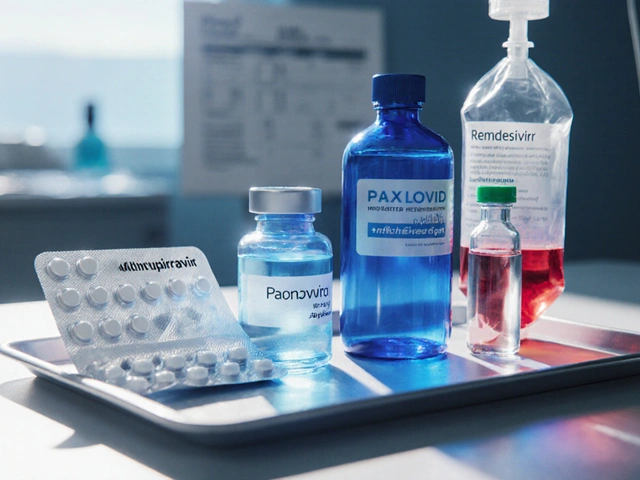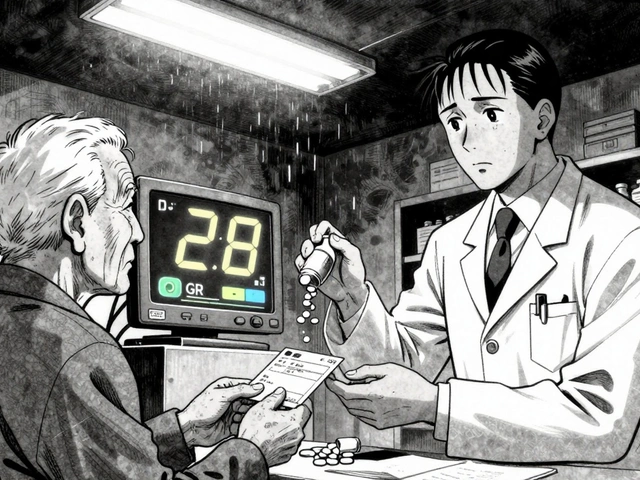PMDD Guide: Symptoms, Causes & Practical Relief Tips
If you’ve ever felt crushed by mood swings, cramps, or brain fog a week before your period, you might be dealing with PMDD – Premenstrual Dysphoric Disorder. It’s more than just “bad PMS”; it can mess with work, relationships, and sleep. Below you’ll find straight‑forward info on spotting the signs, why they happen, and what you can actually do today to feel better.
Recognizing PMDD Symptoms
The first step is knowing what to look for. Unlike typical PMS, PMDD symptoms hit hard enough to interrupt daily life. Common clues include:
- Intense irritability or sudden anger that feels out of character.
- Feeling hopeless, sad, or tearful without a clear reason.
- Sharp anxiety, panic attacks, or racing thoughts.
- Severe physical pain – throbbing cramps, breast tenderness, and joint aches.
- Changes in appetite, especially cravings for salty or sweet foods.
If you notice at least five of these symptoms showing up consistently in the luteal phase (the two weeks before your period) and they disappear once bleeding starts, PMDD is a strong possibility. Tracking your cycle with a simple diary or an app can make this pattern crystal clear.
Managing PMDD Effectively
The good news? There are several evidence‑backed ways to dial down the storm. Lifestyle tweaks work for many people, and they’re easy to start:
- Nutrition. Cut back on caffeine, alcohol, and refined sugar a few days before your period. Add more omega‑3 rich foods like salmon or walnuts – they help balance hormones.
- Exercise. Even a 20‑minute walk can boost endorphins and reduce mood swings. Aim for steady activity rather than intense bursts right before ovulation.
- Sleep hygiene. Keep bedtime consistent, dim lights an hour before sleep, and avoid screens to curb insomnia that often worsens PMDD.
If lifestyle changes aren’t enough, talk to a healthcare provider about medication options. SSRIs such as sertraline are commonly prescribed for PMDD and can be taken only during the symptomatic phase (called “intermittent dosing”). Birth‑control pills that suppress ovulation also help many women by stabilizing hormone swings.
Supplements like calcium, magnesium, and vitamin B6 have shown modest benefits in studies. Choose reputable brands and start with low doses to see how your body reacts.
Stress management is another key piece. Mindfulness meditation, deep‑breathing exercises, or even short yoga sessions can lower cortisol levels that amplify emotional symptoms.
Don’t underestimate the power of support. Sharing what you’re experiencing with a trusted friend, partner, or therapist creates a safety net and reduces feelings of isolation.
Finally, keep an eye on any co‑existing conditions such as thyroid disorders or depression – they can mimic or worsen PMDD symptoms. A quick blood test can rule these out and guide treatment.
Living with PMDD doesn’t have to be a constant battle. By recognizing the warning signs early, tweaking diet and lifestyle, and seeking professional help when needed, you can reclaim those weeks before your period and feel more in control of your life.
Understanding Long-Term Health Impacts of Premenstrual Dysphoric Disorder
Premenstrual Dysphoric Disorder (PMDD) is more than just severe PMS; it can influence long-term physical and mental health. This article explores the chronic impacts of PMDD, offers helpful tips for management, and discusses available treatment options to improve quality of life.
About
Health and Wellness
Latest Posts


Understanding Long-Term Health Impacts of Premenstrual Dysphoric Disorder
By Orion Kingsworth Jun 18, 2024

Raltegravir and Sleep: Understanding its Impact on Sleep Quality for HIV Patients
By Orion Kingsworth Feb 17, 2025

Top Alternative Medications to Inderal for 2025: An In-Depth Guide
By Orion Kingsworth Jan 4, 2025

